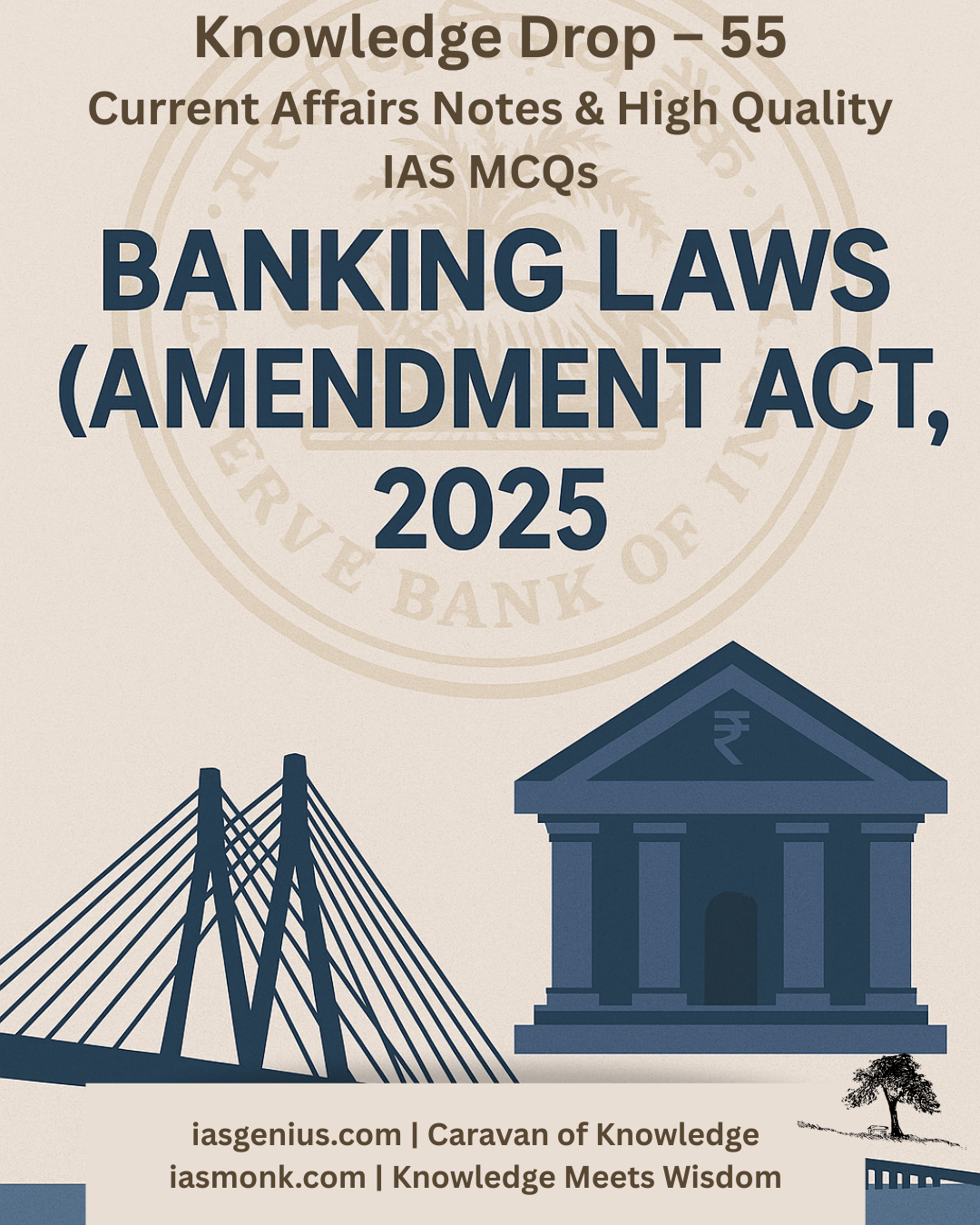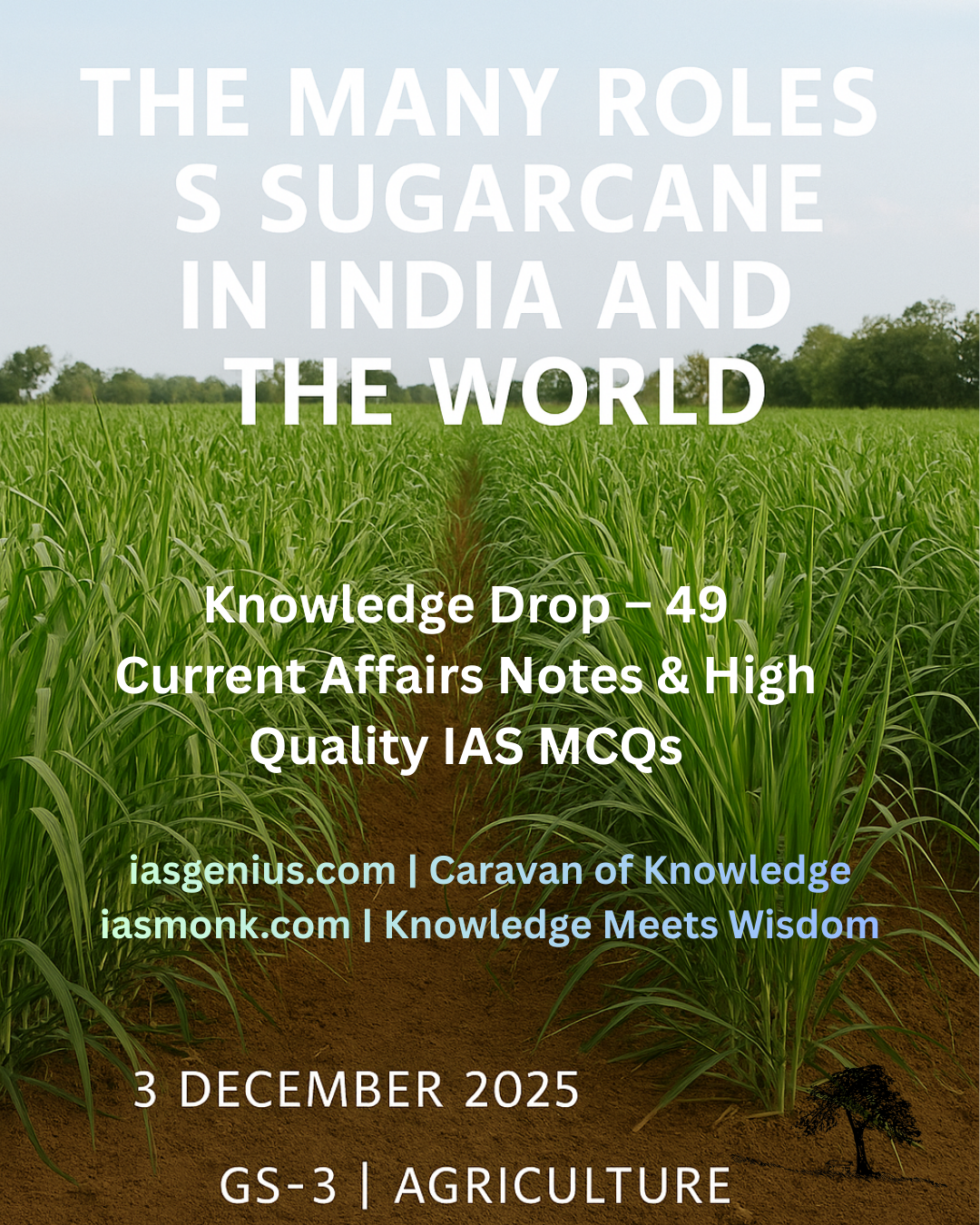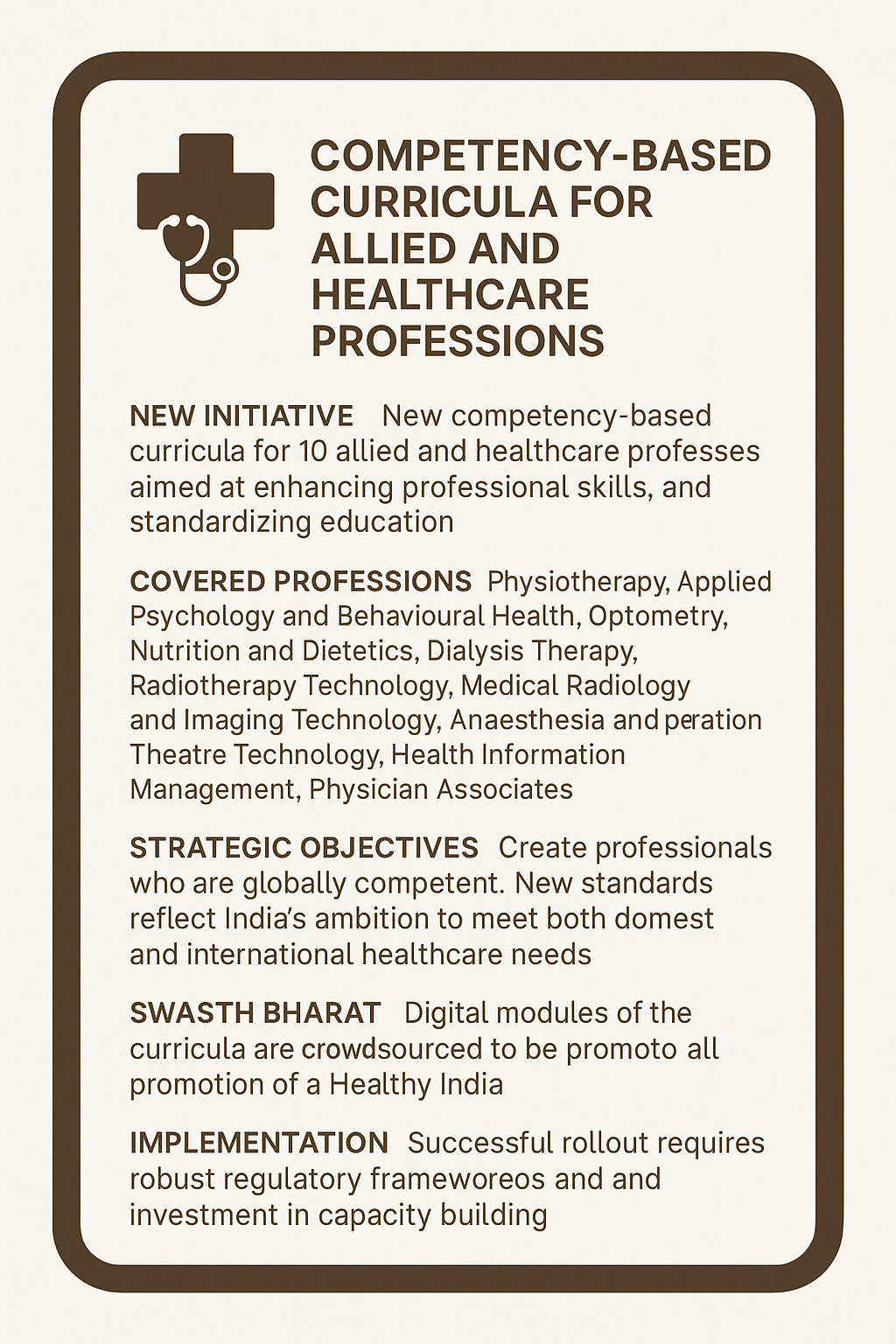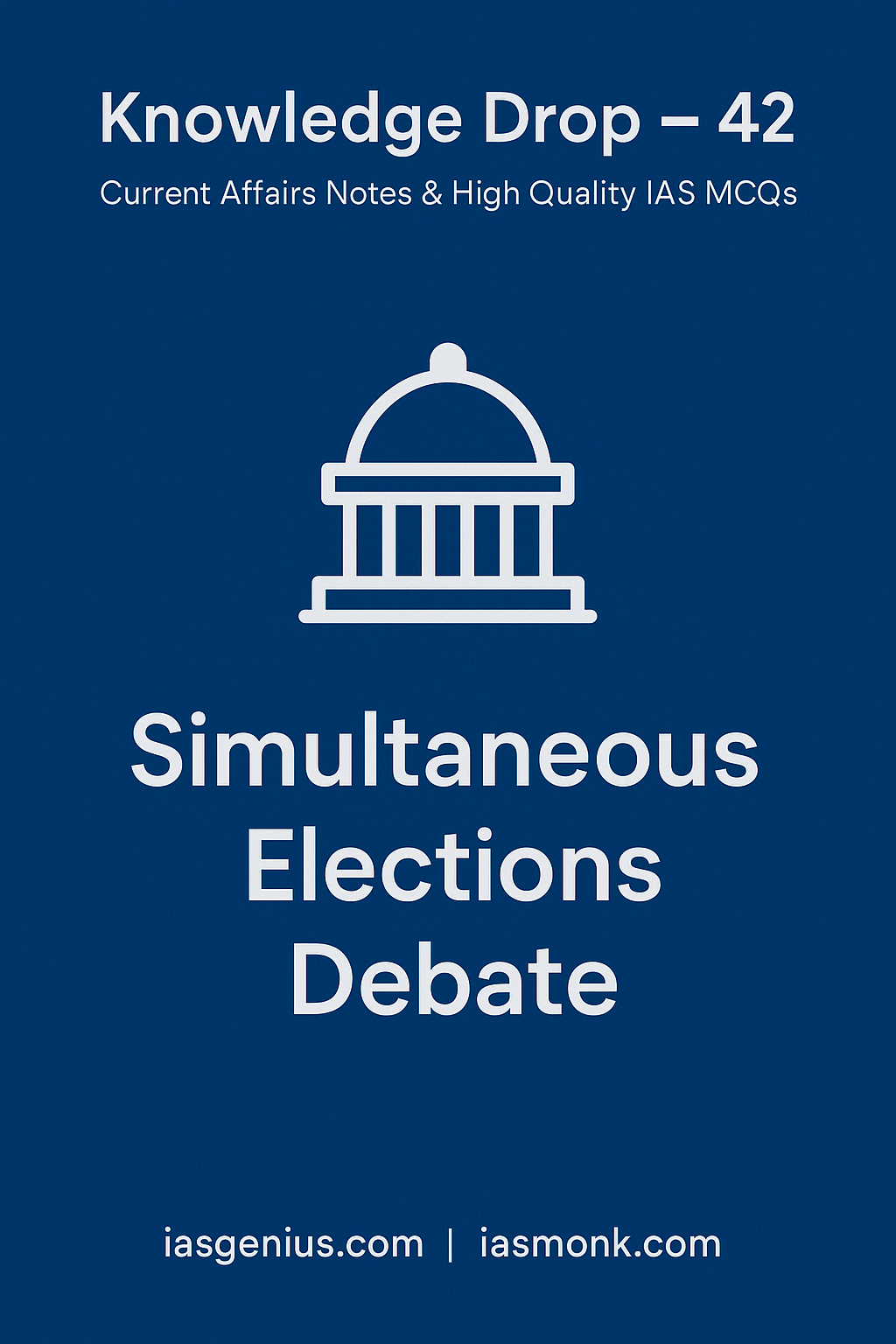
📅 May 9, 2025, Post 16: 🛡️ 10 YEARS OF JAN SURAKSHA | Mains Essay / Target IAS-26 MCQs Attached: A complete Package, Dear Aspirants!
🛡️ 10 YEARS OF JAN SURAKSHA

May 9, 2025 | — PETAL 016 | Category: News Drop / Governance / Welfare Schemes
🌱 Intro Whisper:
A decade ago, three humble schemes promised dignity to the uninsured and unheard. Today, they stand as the silent shield of millions.
📜 Key Highlights
What Are the Jan Suraksha Schemes?
Launched on 9 May 2015 by Prime Minister Narendra Modi, these three low-cost schemes form India’s social security backbone for the unorganised sector:
1. Pradhan Mantri Jeevan Jyoti Bima Yojana (PMJJBY)
• Type: Life insurance scheme, renewed annually
• Eligibility: Age 18–50 with bank/post office account
• Benefit: ₹2 lakh cover for death from any cause
• Premium: ₹436/year
2. Pradhan Mantri Suraksha Bima Yojana (PMSBY)
• Type: Accidental insurance scheme, renewed annually
• Eligibility: Age 18–70 with bank/post office account
• Benefit: ₹2 lakh (death/disability), ₹1 lakh (partial disability)
• Premium: ₹20/year
3. Atal Pension Yojana (APY)
• Type: Guaranteed pension scheme for the unorganised sector
• Eligibility: Age 18–40, not an income tax payer
• Benefit: Monthly pension of ₹1,000–₹5,000 after age 60
• Administered by: PFRDA under National Pension System
Payout Structure for APY
– Pension for Subscriber → then Spouse → then Nominee (lump sum corpus)
– Premature death: Spouse can continue till age 60 of subscriber
🧭 GS Mapping
GS Paper 2 – Governance, Welfare Schemes for Vulnerable Sections
GS Paper 3 – Inclusive Growth, Financial Inclusion
GS Paper 4 – Empathy, Duty of the State
🌾 Why It Matters
• Low-cost Safety Net: Affordable premiums made social security accessible
• Women-Centric Progress: Significant female participation in APY
• Jan Dhan Synergy: Schemes piggybacked on bank account penetration
• Insurance Awareness: Broadened access to formal financial protection
💭 A Thought Spark — by IAS Monk
True empowerment lies not in loud slogans but in the quiet promise that no worker, no widow, no woman is left behind when life wavers.
High Quality Mains Essay For Practice :
Word Limit 1000-1200
Welfare Schemes and Democracy: The Silent Hand that Holds the Republic Together
In the quiet corners of India’s villages and the bustling slums of its cities, democracy doesn’t always arrive in the form of ballots and manifestos—it often arrives as a school midday meal, a subsidized cylinder, a pension in old age, or a health card that saves a life. In the grand narrative of democratic governance, welfare schemes are not mere handouts—they are the invisible architecture that gives democracy its moral weight and social legitimacy.
Introduction: The Democratic Contract and the Welfare Mandate
At its core, democracy is a social contract—one where the governed give legitimacy to the government through elections, and in return, expect justice, dignity, and a life of basic security. Welfare schemes are the most tangible fulfilment of this promise, offering not just relief, but dignity, hope, and often, survival. For a democracy as large, diverse, and unequal as India, the welfare state is not a luxury—it is a foundational necessity.
A Historical Glance: From Directive Principles to Direct Transfers
The idea of welfare is deeply enshrined in India’s Constitution. The Directive Principles of State Policy call upon the government to strive for the welfare of the people by securing a social order in which justice—social, economic, and political—shall inform all institutions of national life. Over time, this has taken many forms:
- Green Revolution and PDS brought food security.
- NREGA gave employment as a legal right.
- Jan Dhan, Aadhaar, Mobile (JAM) Trinity enabled Direct Benefit Transfers (DBT).
- Ayushman Bharat, Ujjwala, and PM-KISAN addressed health, energy, and agriculture.
Each of these schemes—while targeting specific needs—cumulatively serve to bridge the gap between the ideals of democracy and the lived experience of its citizens.
The Role of Welfare in Strengthening Democracy
1. Inclusion of the Marginalized
Welfare schemes empower those historically excluded—Dalits, tribals, women, the elderly, informal sector workers, and rural poor. By ensuring access to resources and services, they bring the invisible into the visible fold of the democratic polity.
2. Reducing the Tyranny of Fate
In a society marred by structural inequalities, welfare schemes serve as corrective instruments. They help neutralize the accident of birth—into poverty, caste, or gender—and create a more level playing field.
3. Enhancing Participation and Awareness
When the state becomes visible through welfare, citizens become more aware of their rights and entitlements. This stimulates political participation, fosters accountability, and reduces the democratic deficit.
4. Strengthening Trust in Institutions
Regular, reliable delivery of welfare schemes builds trust in democratic institutions—from local governments to financial systems. The credibility of a democracy is measured not just in elections, but in how well it protects its weakest.
Challenges: When Welfare Becomes a Political Game
Despite its necessity, the delivery of welfare in democracies often faces criticism and hurdles:
- Populism vs Empowerment: Welfare often gets reduced to vote-bank politics, with schemes designed for optics rather than impact.
- Leakages and Corruption: Before the era of DBT and Aadhaar, a large part of welfare benefits was lost to middlemen.
- Fragmentation of Schemes: Multiple overlapping schemes confuse beneficiaries and create administrative overload.
- Exclusion Errors: Digitization and Aadhaar linkage, while solving leakages, have sometimes excluded the most vulnerable due to lack of documentation or technological access.
- Dependency Critique: There’s an ongoing debate on whether welfare promotes dependency or enables resilience.
Global Parallels: Welfare and the Democratic Spirit Worldwide
Across the globe, mature democracies have relied heavily on welfare to sustain social cohesion:
- The Nordic Model (Sweden, Norway, Denmark) blends capitalism with extensive welfare, leading to some of the happiest societies.
- US Social Security and Medicare, though often contested, form the backbone of old-age and health support.
- Brazil’s Bolsa Familia and Mexico’s Oportunidades were game-changers in Latin America’s fight against poverty.
These examples show that welfare is not antithetical to growth or efficiency—it complements both, by building a healthy, educated, and secure population.
The Indian Future: Towards Smart, Integrated, Rights-Based Welfare
To make welfare more democratic in spirit and efficient in delivery, India must:
- Ensure Rights-Based Welfare: Like the Right to Education and NREGA, welfare must be legally guaranteed.
- Digitally Integrate Schemes: A unified welfare portal with real-time tracking and grievance redressal.
- Localize Delivery: Empower panchayats and local bodies to tailor schemes to local needs.
- Data-Driven Targeting: Use socio-economic caste census and AI to identify real beneficiaries.
- Strengthen Social Audits: Make beneficiaries active stakeholders in monitoring welfare delivery.
Conclusion: Democracy’s True Face in a Bowl of Rice
The true strength of a democracy is not revealed during its elections, but in its everyday governance—in the quiet dignity it grants its citizens. Welfare schemes are not about charity. They are about justice. They are democracy’s extended hand—a state bending to cradle those who cannot yet stand on their own.
As India progresses toward its centenary of independence, it must remember: a welfare state is not a burden on democracy—it is its soul. Without it, democracy is but a ritual; with it, democracy becomes a daily experience of dignity.
Target IAS-26: Daily MCQs :
📌 Prelims Practice MCQs
Topic:
MCQ 1 (Type 1)
Consider the following statements regarding the Pradhan Mantri Jeevan Jyoti Bima Yojana (PMJJBY):
1. It offers a life insurance cover of ₹2 lakh for death due to any reason.
2. It is available to individuals aged 18–60 years.
3. The premium amount is ₹20 per annum.
4. The scheme is renewed every five years.
How many of the above statements are correct?
A) Only two
B) Only three
C) All four
D) Only one
🌀 Didn’t get it? Click here (▸) for the Correct Answer & Explanation
✅ Correct Answer: A) Only two
🧠 Explanation:
1) Correct – PMJJBY provides ₹2 lakh life cover for death due to any reason.
• 2) Incorrect – The eligible age is 18–50 years, not 60.
• 3) Incorrect – The premium is ₹436, not ₹20 (that applies to PMSBY).
• 4) Incorrect – It is renewable annually, not every five years. ✅ Only statements 1 and 4 are correct.
MCQ 2 (Type 2)
Statement 1: Pradhan Mantri Suraksha Bima Yojana (PMSBY) provides insurance against both natural death and accidental death.
Statement 2: The premium for PMSBY is ₹436 per annum.
Which of the above statements is/are correct?
A) Only 1 is correct
B) Only 2 is correct
C) Both are correct
D) Neither is correct
🌀 Didn’t get it? Click here (▸) for the Correct Answer & Explanation
✅ Correct Answer: D) Neither is correct
🧠 Explanation:
1) Incorrect – PMSBY covers accidental death and disability only, not natural death.
2) Incorrect – The premium is ₹20, not ₹436. ✅ Both statements are incorrect..
MCQ 3 (Type 3)
Which of the following statements is/are correct regarding Atal Pension Yojana (APY)?
1. It is open to all Indian citizens between 18–60 years of age.
2. The scheme is targeted at the organised sector employees.
3. The government guarantees a minimum monthly pension to the subscriber after 60 years of age.
Select the correct answer using the code below:
A) 1 and 2 only
B) 2 and 3 only
C) 3 only
D) 1 and 3 only
🌀 Didn’t get it? Click here (▸) for the Correct Answer & Explanation
✅ Correct Answer: C) 3 only
🧠 Explanation:
1) Incorrect – APY is open to citizens aged 18–40, not 60.
• 2) Incorrect – It targets the unorganised sector, not organised.
• 3) Correct – A minimum guaranteed pension (₹1000–₹5000) is provided after age 60. ✅ Only statement 3 is correct.
MCQ 4 (Type 4 – Direct Factual)
Which institution administers the Atal Pension Yojana (APY)?
A) State Bank of India
B) National Payments Corporation of India (NPCI)
C) Pension Fund Regulatory and Development Authority (PFRDA)
D) Insurance Regulatory and Development Authority of India (IRDAI)
🌀 Didn’t get it? Click here (▸) for the Correct Answer & Explanation.
✅ Correct Answer: C) Pension Fund Regulatory and Development Authority (PFRDA)
🧠 Explanation:
The APY is administered by PFRDA, under the framework of the National Pension System (NPS). ✅ Correct answer: PFRDA.


















